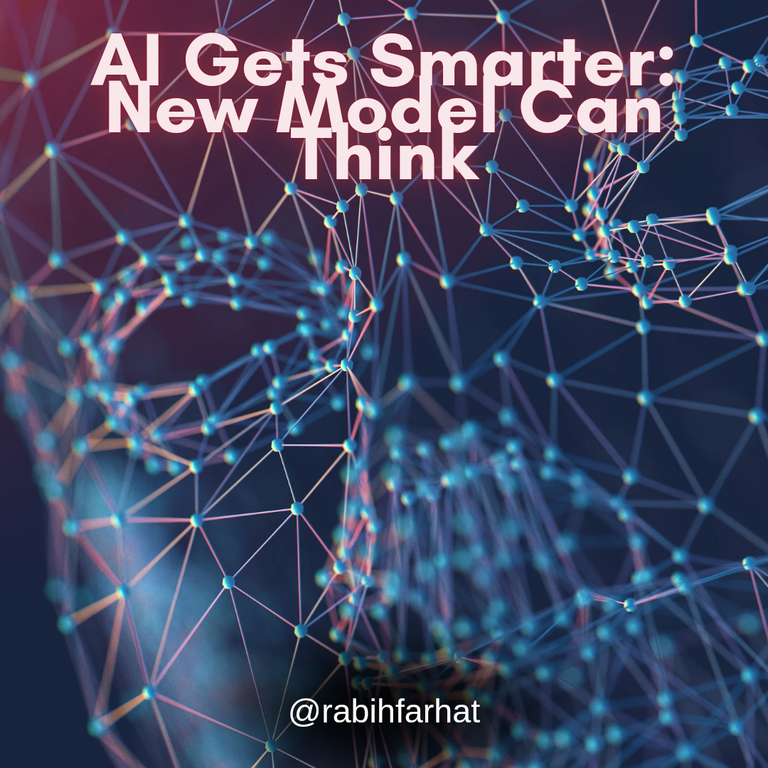AI Gets Smarter: New Model Can Think
Introduction
Work is still ongoing and rapidly developing the capabilities of artificial intelligence, as OpenAI developed a new generative AI model a few days ago, which is capable of thinking and answering more complex questions, especially in the field of mathematics, and the goal is to reduce the possibility of “hallucinations” that sometimes affect this type of programs.

The idea behind this development is for this version of artificial intelligence to think before giving an answer. The launch of this model represents a new step towards achieving the goal of developing "general" artificial intelligence, i.e. artificial intelligence similar to human intelligence.
This is considered a very advanced step in this field by creating a new model of artificial intelligence capable of thinking in a complex and general way.
However, this technology is still incomplete, limited, and may seem more impressive when used for the first time, but after using it for more time, we may discover many loopholes.
According to a number of experts who tested the new model, after asking it a number of questions, the answers were similar to the old models, but it took more time and gave more details about its answers, instead of generating them almost instantly.
Another difference is that the new model is currently unable to process or create content other than text.
It is worth mentioning here, and to highlight the importance of artificial intelligence technology, that the company seeks to raise contributions that will raise its value to about $150 billion, making it one of the most expensive unlisted companies in the world.
The list of investors includes Microsoft and the giant chip manufacturing company Nvidia. The media has also circulated the names of other entities such as Apple, which is already using the startup’s technology in its new generative artificial intelligence system, the private equity firm “Thrive Capital”, and the technology investment company MGX, which was founded by the Artificial Intelligence and Advanced Technology Council in the United Arab Emirates.
Since then, all the major technology groups, from Microsoft to Google and Meta (owner of Facebook and Instagram), have been competing to provide tools that aim to help humans with everyday tasks, from writing letters to education and artistic creation.
But these AI-based assistants are nothing more than machines that convincingly predict sequences of words or the arrangement of pixels, but without thinking, and therefore without understanding the sentences or images they generate.
It is thus noted that these models, trained by a huge amount of data taken from the Internet, can sometimes hallucinate by inventing inaccurate facts and information, and may find it difficult to solve simple mathematical problems.
According to the company, it said that it tested its new model in the field of solving mathematical problems or producing lines of code, and confirmed that it competes with the performance of human experts in a large number of standardized tests that require a strong ability to think. It added that it was able to rank among the top 500 students in a mathematics competition for American high schools.
It explained that it uses a series of thoughts, as a human who can think for a long time, before answering a difficult question.
Conclusion
We can say that the new model can learn how to recognize and correct its mistakes, learn to divide difficult steps into simpler steps, and learn to try a different approach when the first approach does not work. Although the new model "hallucinates less" than its predecessor, but we cannot say that hallucinations have been solved.
However, the new model is expected to represent an improvement in terms of security and compatibility with human values, because its thinking has become "readable" and applies security rules better.
*Image designed using Canva
Posted Using InLeo Alpha